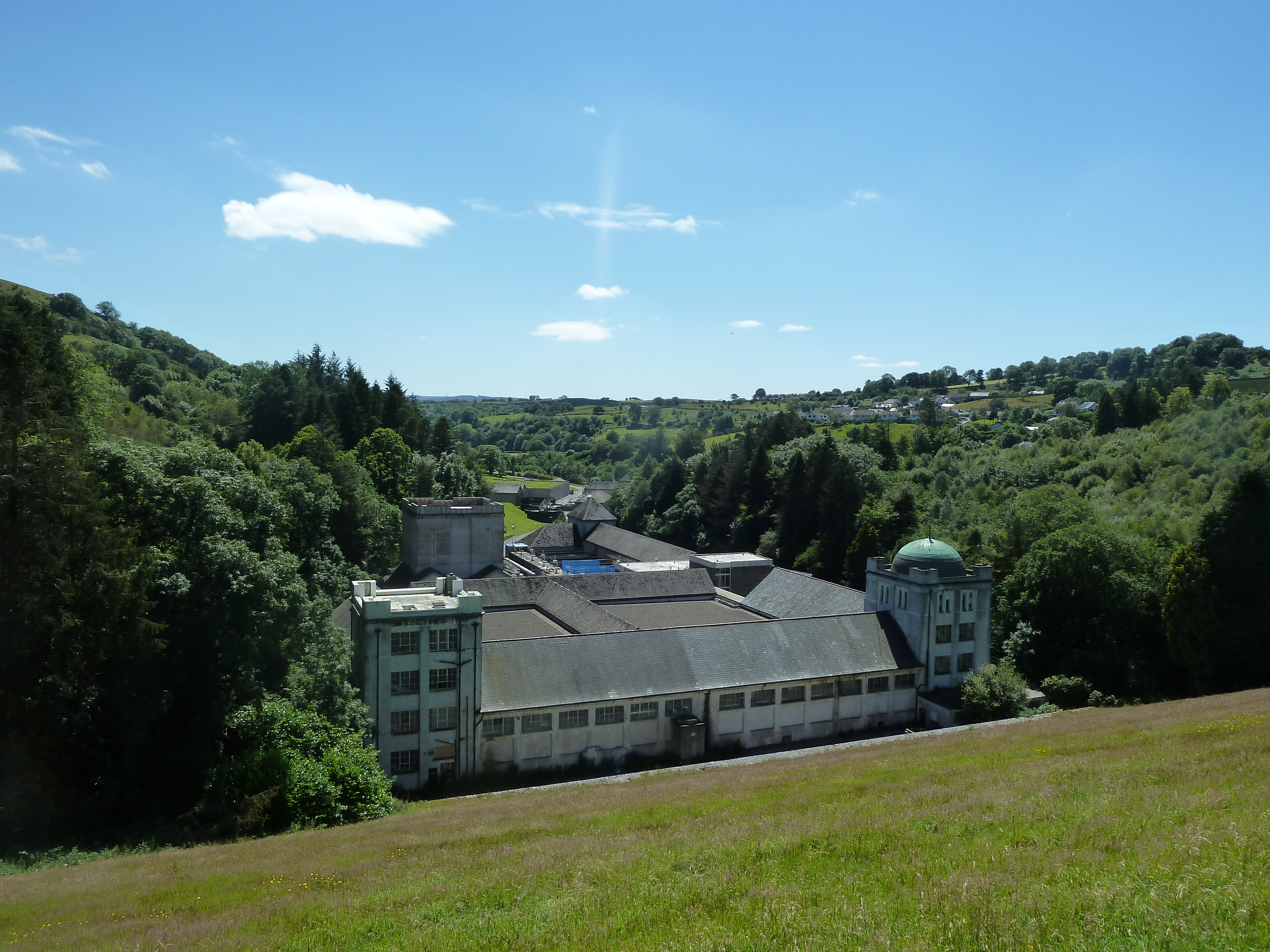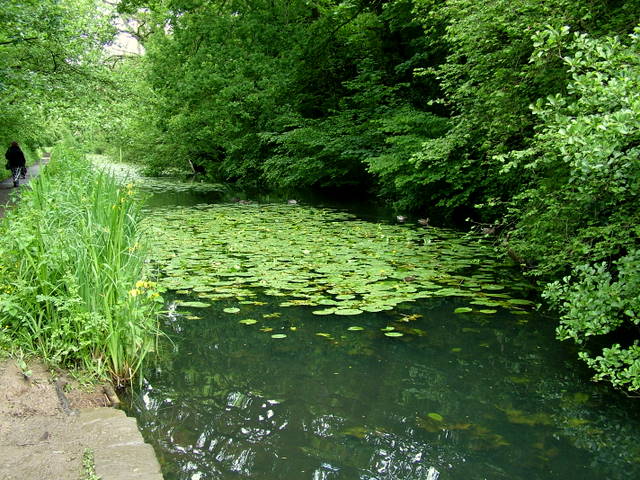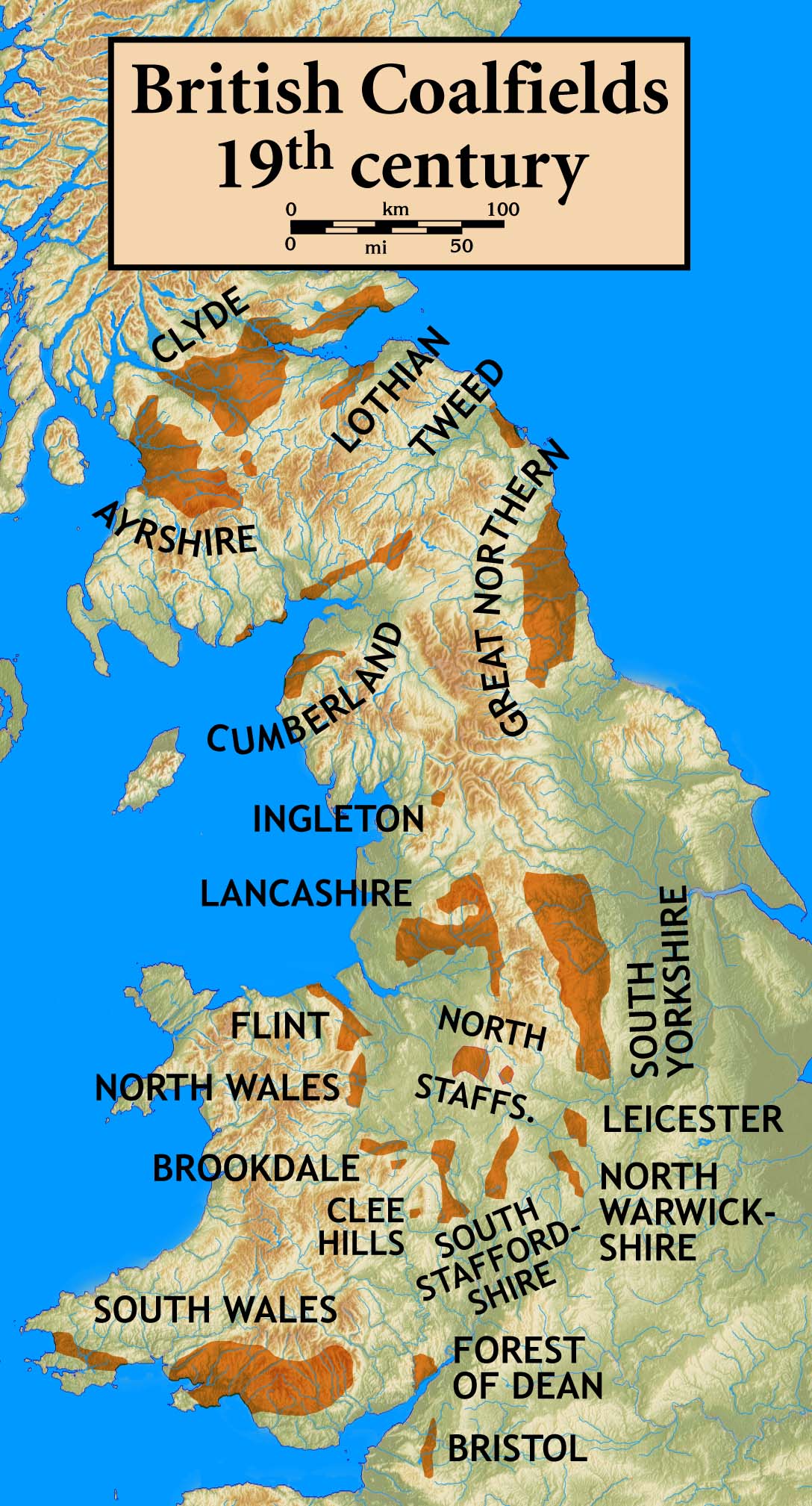|
Cilfynydd
Cilfynydd is a village in the county borough of Rhondda Cynon Taf, Wales, a mile from the South Wales Valleys town of Pontypridd, and 13 miles north of the capital city, Cardiff. Cilfynydd is also an electoral ward for the county council and Pontypridd Town Council. History Situated on the banks of the River Taff, the village was named after Cilfynydd farm, which was on the east side of the valley. Cilfynydd Farm was farmed by the Lloyd family, most recently Gwun and Lewis Lloyd, who are now both deceased. Cilfynydd was originally a farming hamlet, consisting of some cottages built along the Glamorganshire Canal and a few surrounding farms. These properties, according to the 1881 census, housed about 100 people, but this all changed over the next two decades. Albion Colliery Sinking of Albion Colliery began in August 1884 on the site of Ynyscaedudwg Farm. It was owned by the Albion Steam Coal Company and opened in August 1887. It was served by the Llancaiach Branch lin ... [...More Info...] [...Related Items...] OR: [Wikipedia] [Google] [Baidu] [Amazon] |
Pontypridd
Pontypridd ( , ), Colloquialism, colloquially referred to as ''Ponty'', is a town and a Community (Wales), community in Rhondda Cynon Taf, South Wales, approximately 10 miles north west of Cardiff city centre. Geography Pontypridd comprises the electoral wards of Cilfynydd, Glyncoch, Graig Pontypridd, Graig, Hawthorn, Glamorgan, Hawthorn, Pontypridd Town, 'Rhondda', Rhydyfelin Central/Ilan, Trallwng (Trallwn Pontypridd, Trallwn) and Treforest. The town mainly falls within the Pontypridd (Senedd constituency), Senedd and Pontypridd (UK Parliament constituency), UK parliamentary constituency by the same name, although the Cilfynydd and Glyncoch wards fall within the Cynon Valley (Senedd constituency), Cynon Valley Senedd constituency and the Cynon Valley (UK Parliament constituency), Cynon Valley UK parliamentary constituency. This change was effective for the 2007 National Assembly for Wales election, 2007 Welsh Assembly election, and for the 2010 United Kingdom general election, ... [...More Info...] [...Related Items...] OR: [Wikipedia] [Google] [Baidu] [Amazon] |
Llancaiach Branch
The Llancaiach Branch railway line was a mineral branch line in Glamorganshire, South Wales. It was authorised in 1836 as part of the Taff Vale Railway, and its purpose was to connect collieries at Llancaiach and bring their output to Cardiff for onward shipment. It was designed by Isambard Kingdom Brunel and built on the standard gauge. It opened in 1841 from a junction (later known as Stormstown Junction) with the Merthyr line immediately south of Abercynon (then called Navigation House). It was intended to be horse worked, and included a self-acting rope-worked inclined plane near the junction. The collieries were slow to use the line, preferring their customary use of a tramroad and the Glamorganshire Canal, and the value of the line was diminished when the ''Taff Vale Extension line'', an east-west connecting line belonging to the Newport, Abergavenny and Hereford Railway, intersected it and cut off the colliery connections, and the line became dormant. In 1878 the Taff Vale ... [...More Info...] [...Related Items...] OR: [Wikipedia] [Google] [Baidu] [Amazon] |
Taff Vale Railway
The Taff Vale Railway (TVR) was a standard gauge railway in South Wales, built by the Taff Vale Railway Company to serve the iron and coal industries around Merthyr Tydfil and to connect them with docks in Cardiff. It was opened in stages in 1840 and 1841. In the railway's first years, the coal mining industries expanded considerably and branches were soon opened in the Rhondda valleys and the Cynon Valley. The conveyance of coal for export and for transport away from South Wales began to dominate and the docks in Cardiff and the approach railway became extremely congested. Alternatives were sought and competing railway companies were encouraged to enter the trade. In the following decades further branch lines were built and the TVR used "motor cars" (steam railway passenger coaches) from 1903 to encourage local passenger travel. From 1922 the TVR was a constituent of the new Great Western Railway (GWR) at the grouping of the railways, imposing its own character on ... [...More Info...] [...Related Items...] OR: [Wikipedia] [Google] [Baidu] [Amazon] |
Pontypridd High School
Pontypridd High School () (formerly known as Coedylan Comprehensive) is an English-medium comprehensive school in the village of Cilfynydd near Pontypridd, in the county borough of Rhondda Cynon Taf, Wales. Admissions It is for ages 11–18. It is on the west side of the A470. History Grammar school It was known as Pontypridd County Grammar School, a boys' grammar school, which had been established in 1895 as a co-educational school, and later became a single-sex school. Comprehensive When becoming comprehensive, it was known as Coedylan Comprehensive School. Notable former pupils Pontypridd County Grammar School * Desmond Brayley, Baron Brayley * Sir Ivor Broom, station commander of RAF Brüggen from 1962–64, AOC of No. 11 Group RAF from 1970–72, and controller from 1974-77 of National Air Traffic Services (NATS) * Anthony Crockett, Bishop of Bangor from 2004–08 * Glyn Davies, rugby player * Sir Trevor Evans, journalist * Bernard Hedges, professional cricketer ... [...More Info...] [...Related Items...] OR: [Wikipedia] [Google] [Baidu] [Amazon] |
Rhondda Cynon Taf
Rhondda Cynon Taf (; RCT; also spelt as Rhondda Cynon Taff) is a Principal areas of Wales, county borough in the South East Wales, south-east of Wales. It consists of five valleys: the Rhondda Fawr, Rhondda Fach, Cynon, Taff () and Ely valleys, plus several towns and villages away from the valleys. Results from the 2011 census showed 19.1% of its 234,410 residents self-identified as having some ability in the use of the Welsh language. The county borough borders Merthyr Tydfil County Borough and Caerphilly County Borough to the east, Cardiff and the Vale of Glamorgan to the south, Bridgend County Borough and Neath Port Talbot to the west and Powys to the north. Its principal towns are - Aberdare, Llantrisant with Talbot Green and Pontypridd, with other key settlements/towns being - Maerdy, Ferndale, Rhondda Cynon Taf, Ferndale, Hirwaun, Llanharan, Mountain Ash, Rhondda Cynon Taf, Mountain Ash, Porth, Tonypandy, Tonyrefail and Treorchy. The most populous individual town in Rhond ... [...More Info...] [...Related Items...] OR: [Wikipedia] [Google] [Baidu] [Amazon] |
Cynon Valley (UK Parliament Constituency)
Cynon Valley () was a Constituencies of the Parliament of the United Kingdom, constituency in Wales, of the House of Commons of the United Kingdom, House of Commons of the Parliament of the United Kingdom, UK Parliament from 1983 to 2024. Its last MP from 2019 United Kingdom general election, 2019 to 2024 was Beth Winter of the Labour Party (UK), Labour Party. The Cynon Valley (Senedd constituency), Cynon Valley Senedd constituency was created with the same boundaries in 1999 (as an Assembly constituency). The constituency was abolished as part of the 2023 periodic review of Westminster constituencies and under the List of parliamentary constituencies in Wales#Final recommendations, June 2023 final recommendations of the Boundary Commission for Wales. Its wards were split between Merthyr Tydfil and Aberdare (UK Parliament constituency), Merthyr Tydfil and Aberdare, and Pontypridd (UK Parliament constituency), Pontypridd. Boundaries 1983–2010: The Borough of Cynon Valley ... [...More Info...] [...Related Items...] OR: [Wikipedia] [Google] [Baidu] [Amazon] |
River Taff
The River Taff () is a river in Wales. It rises in the Brecon Beacons as two rivers, the Taf Fechan ("little Taff") and the Taf Fawr ("great Taff") before becoming one just north of Merthyr Tydfil. At Cardiff, it empties into the Bristol Channel. The river supports several species of migratory fish, including salmon, sewins (sea trout), and eels. Course From its confluence at Cefn-coed-y-cymmer, the river flows south, passing several towns. It picks up a few tributaries, such as the River Cynon, River Rhondda, Bargoed Taf and Nant Clydach. It flows through Pontypridd and through to Taff's Well, the site of Wales' only thermal spring. It flows underneath the M4 Motorway, before turning southeastward and flowing past the Cardiff suburbs of Radyr, Whitchurch, Llandaff, Pontcanna, the city centre and Grangetown, before emptying into Cardiff Bay, near to the mouth of the River Ely. Taf Fawr The Taf Fawr rises below the peak of Corn Du, south-west of Pen y Fan and so ... [...More Info...] [...Related Items...] OR: [Wikipedia] [Google] [Baidu] [Amazon] |
Glamorganshire Canal
The Glamorganshire Canal () in South Wales, UK, was begun in 1790. It ran along the valley of the River Taff from Merthyr Tydfil to the Bristol Channel at Cardiff. The final section of canal was closed in 1951. History Construction started in 1790; being watched over by the wealthy ironmasters of Merthyr Tydfil, including Richard Crawshay of the Cyfarthfa Ironworks, the canal was thought up as a solution to the issue of transporting the goods (iron ore, coal and limestone) from the valleys to Cardiff, where they would be shipped around the world. Thomas Dadford was hired to inspect and plan a route for the canal and, with support from Lord Cardiff, the canal was authorised by an act of Parliament, the ( 30 Geo. 3. c. 82) on 9 June 1790. Almost £90,000 was raised in preparation of constructing the canal and would be linked to any works within four miles of the canal, through branch canals and linking railways. However, during the few miles approaching Cardiff, the canal ... [...More Info...] [...Related Items...] OR: [Wikipedia] [Google] [Baidu] [Amazon] |
1913 United Kingdom Tornado Outbreak
The 1913 United Kingdom tornado outbreak was an outbreak of tornadoes, particularly over England and Wales, on 27 October 1913. The most notable tornadoes occurred in South Wales, where at least two tornadoes had winds of at least . This is equal to an F3 on the Fujita scale. One of the tornadoes, at Edwardsville, Merthyr Tydfil, resulted in 6 deaths and hundreds of injuries. This is the deadliest-known tornado to occur in the United Kingdom. Other notable tornadoes struck in Cheshire and Shropshire. Meteorological background A rapidly deepening low-pressure extratropical cyclone tracked quickly south on the afternoon of 27 October. The central pressure of the system was at midnight on the 27th, deepening to by 18:00. The low pressure helped to sustain a stream of strong southerly winds, as in days previous, sustaining significantly warmer than average conditions. Temperatures were widely reported over in some places. Active weather fronts arriving from the Atlantic Ocean ... [...More Info...] [...Related Items...] OR: [Wikipedia] [Google] [Baidu] [Amazon] |
South Wales Coalfield
The South Wales Coalfield () extends across Pembrokeshire, Carmarthenshire, Swansea, Neath Port Talbot, Bridgend, Rhondda Cynon Taf, Merthyr Tydfil, Caerphilly, Blaenau Gwent and Torfaen. It is rich in coal deposits, especially in the South Wales Valleys. Description The area comprises a fully exposed synclinorium which gave rise to dramatic upland areas () rising to 300–600 metres above sea level, and intersected by steep-sided valleys in which most of the area's deep mines were developed. The coal measures (Upper Carboniferous/Pennsylvanian) are thick, workable seams in the lower parts and generally thinner and sparser seams in the upper parts, with a development of sandstones ( Pennant Sandstone) much used in local construction, (including the characteristic terraced houses). The coal generally increases in grade or "rank" from east to west, with bituminous coals in the east, and anthracite in the west, mostly to the north and west of Neath. The Rhondda Valley was par ... [...More Info...] [...Related Items...] OR: [Wikipedia] [Google] [Baidu] [Amazon] |
Capital City
A capital city, or just capital, is the municipality holding primary status in a country, state (polity), state, province, department (administrative division), department, or other administrative division, subnational division, usually as its Seat of government, seat of the government. A capital is typically a city that physically encompasses the government's offices and meeting places; the status as capital is often designated by its law or constitution. In some jurisdictions, including several countries, different branches of government are in different settlements, sometimes meaning multiple official capitals. In some cases, a distinction is made between the official (constitutional) capital and the seat of government, which is in list of countries with multiple capitals, another place. English language, English-language media often use the name of the capital metonymy, metonymically to refer to the government sitting there. Thus, "London-Washington relations" is widely unde ... [...More Info...] [...Related Items...] OR: [Wikipedia] [Google] [Baidu] [Amazon] |
Firedamp
Firedamp is any flammable gas found in coal mines, typically coalbed methane. It is particularly found in areas where the coal is bituminous. The gas accumulates in pockets in the coal and adjacent strata and, when they are penetrated, the release of the gas can cause explosions. Historically, if such a pocket was highly pressurized, it was termed a "bag of foulness". Name Damp is the collective name given to all gases (other than air) found in coal mines in Great Britain and North America. As well as firedamp, other damps include '' blackdamp'' (nonbreathable mixture of carbon dioxide, water vapour and other gases); whitedamp (carbon monoxide and other gases produced by combustion); poisonous, explosive '' stinkdamp'' (hydrogen sulfide), with its characteristic rotten-egg odour; and the insidiously lethal '' afterdamp'' (carbon monoxide and other gases) which are produced following explosions of firedamp or coal dust. Etymology Often hyphenated as fire-damp, this ... [...More Info...] [...Related Items...] OR: [Wikipedia] [Google] [Baidu] [Amazon] |







